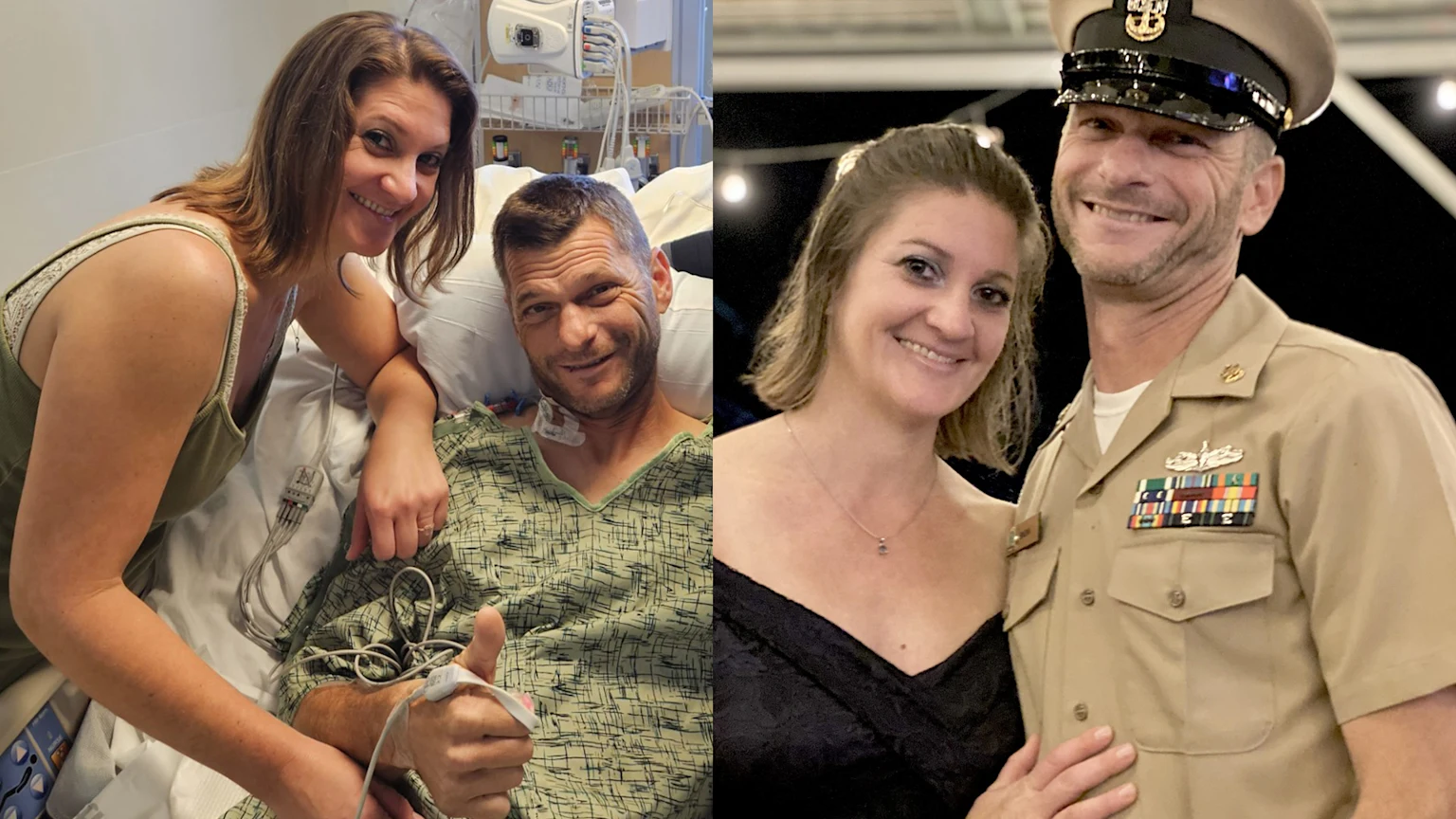
5 ways health care workers steer clear of the flu
Learn about the tricks health care workers use to stay healthy during flu season.
It’s only now, when looking back more than a year after his heart failed, that Sterling Sinema realizes his symptoms started two days before he was rushed to the hospital.
He had no reason to suspect heart problems — at 44, he was in great shape. A Navy chief petty officer, Sterling had even gone for a 10-mile run on the beach with some of his fellow sailors the day before his symptoms began.
The next day, Sterling hosted a barbecue at their Ramona home and began to feel unwell. But with all the food he enjoyed — and maybe an extra drink or two — there didn’t seem to be any cause for alarm. He went to bed early, expecting to feel better in the morning.
However, when Sterling woke up, he still felt lousy. And when the symptoms persisted, his wife, Renee, a nurse, took action. “He thought it was just heartburn, but my nurse-brain kicked in and I said we were going to the closest emergency room,” she says.
The race for treatment
Just a few miles from home, Sterling went into full cardiac arrest. Tires squealing, Renee turned around and raced for the local fire station.
The fire crew sprang into action with a plan to bring him to the nearest North County hospital. But the doctor who received the call that a patient was on the way directed the ambulance to head to Sharp Memorial Hospital instead — even though it was nearly 20 miles farther away.
The doctor’s rerouting request was due to a new pilot program launched by the county, designed for select patients experiencing cardiac arrest. He recognized that Sterling might qualify for a treatment called ECMO, which was the best chance to save his life.
Breaking ground
ECMO stands for extracorporeal membrane oxygenation. It pulls blood out of the body, oxygenates it, and then returns it. Doctors refer to it as a “bridge” treatment because it maintains blood flow, allowing time to treat the underlying causes of the cardiac arrest.
ECMO has been in use since the 1970s. Because it requires inserting large catheters in an artery and vein, the procedure is traditionally performed by cardiothoracic surgeons.
However, in a groundbreaking change, emergency doctors at Sharp Memorial, led by Dr. Zachary Shinar, began performing the procedure in 2010. This eliminated the need to wait for specialists and sped up the process of getting patients the ECMO treatment they need.
Seeing ECMO save some cardiac arrest patients who otherwise would not survive, Dr. Shinar’s colleague Dr. Saul Levine began campaigning county medical officials to allow those who meet certain criteria to be taken to one of the three hospitals in San Diego with immediate ECMO capability, including Sharp Memorial and Sharp Grossmont Hospital, even when they are geographically further away.
The county launched an ECPR (extracorporeal cardiopulmonary resuscitation) pilot program in July 2023.
“We’re trying to help all first responders understand which patients are the ones who would need and qualify for ECMO so that they get to one of the capable hospitals right away,” Dr. Levine says.
A long way to go
Sterling’s case was just the second under the pilot program. As it turns out, Dr. Levine happened to be on duty at Sharp Memorial that day.
When he heard a patient was coming all the way from Ramona, he knew the timing would be tight. Between the drive time and the time to apply ECMO, Sterling had been in cardiac arrest for 58 minutes.
However, once on ECMO, the team had the time they needed to address Sterling’s underlying heart problems. After four days, Sterling was removed from ECMO. A day later, he was well enough to be brought out of sedation.
“What Sterling’s case teaches us is that we can push the limits for what we thought possible for time and distance to save someone’s life,” Dr. Levine says.
Retracing his steps
Almost two years later, Sterling retired after 20 years in the Navy. Renee still works as a nurse, though she’s taken a new job — at Sharp Memorial. “It is awesome to work at the hospital that saved my husband’s life.”

Renee and Sterling are grateful for the caregivers at Sharp Memorial and the program that allowed him quick access to the hospital when he experienced cardiac arrest.
A year to the day after his cardiac arrest, Sterling came back to Sharp Memorial to visit. Because he was unconscious for four days, it felt surreal to be shown rooms he hadn’t known he’d been in and to get hugs from doctors and nurses he hadn’t known had cared for him.
“It was humbling to see how many people it took to save my life,” Sterling says. “To get to say thank you was a really special day. It meant a lot to shake the hand of the people who were on my front line for me.”
Learn more about heart health; get the latest health and wellness news, trends and patient stories from Sharp Health News; and subscribe to our weekly newsletter by clicking the "Sign up" link below.

Our weekly email brings you the latest health tips, recipes and stories.